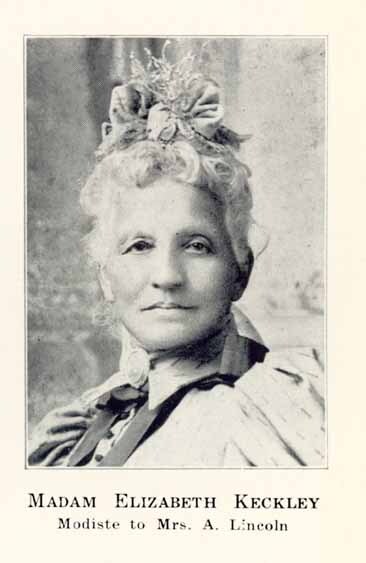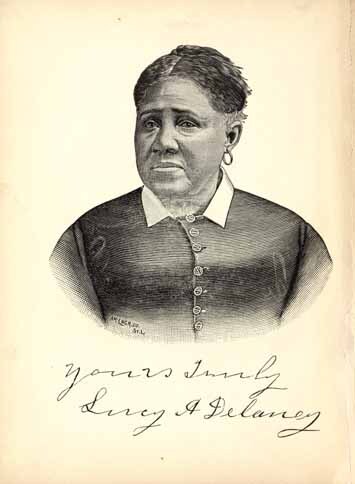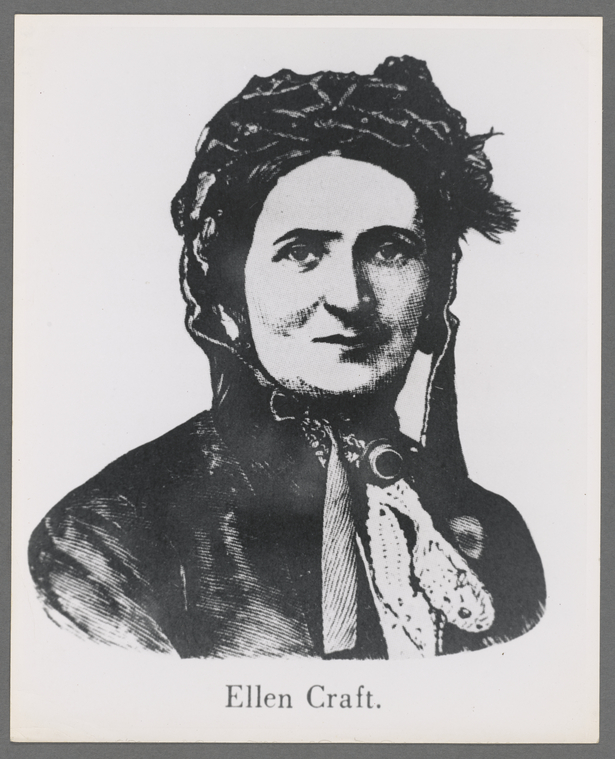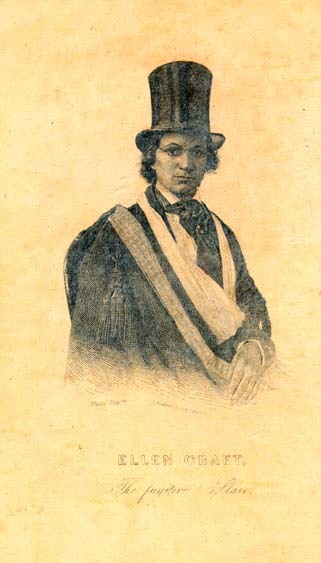Inheritance
The three highlighted authors had very different backgrounds. We learn from each of their autobiographies how their backgrounds dictated the methodology used in their quests for freedom. One factor that is consistent in each autobiography is the involvement of a parent in the quest for freedom.
Elizabeth Keckley, pictured below, in Behind the Scenes, or, Thirty Years a Slave and Four Years in the White House, revealed that she was raised by her mother, who taught her how to sew. Over time, she became quite an accomplished dress designer with a set of well-to-do clients who had an unusual admiration of her. As was the custom for enslaved people, the money she made as a dress designer went to her owner. After many queries, she was finally given a price for her and her son's freedom. Her customers provided the required funds. As a free woman, she was then able to use her dressmaking skills to acquire the money to repay her customers. She was fortunate to have a mother who was able to give her sophisticated sewing skills and an attitude of perseverance.
Lucy Delaney, pictured below, in From the Darkness Cometh the Light or Struggles for Freedom, revealed that she lived with her mother, who was born free and had a life as a free woman with her husband until she was kidnapped and sold into slavery. After many years, with the assistance of a lawyer, she was able to prove that she should be granted her freedom. Even with this ruling from the court system and the law stating that the status of a child was determined by the status of the mother, Lucy’s mother had to struggle to obtain the freedom of her daughter. With further assistance from the lawyer, Lucy was eventually declared free again. She was fortunate to have a mother who was able to convince and afford a lawyer to assist with their quest through the court system to regain their freedom.
Ellen Craft is pictured below in images from her autobiography, Running a Thousand Miles for Freedom; or, The Escape of William and Ellen Craft from Slavery, in both female and male dress. She lived with her enslaved mother, and they worked in the plantation house where her father was their owner. Because of her appearance and her biological father, she was frequently perceived by visitors as a family member instead of an enslaved servant. The plantation mistress despised Ellen and punished her severely because she resembled her father. The plantation mistress successfully plotted to have Ellen removed from the plantation. This abrupt separation from her mother and family made Ellen vow to never have children until she was free. In her quest for freedom, Ellen used her white appearance (skin color, hair texture, facial features) to disguise herself as a male plantation owner traveling north for medical treatment with her husband, who was disguised as her enslaved valet. The images of Craft document her transition from female to male presentation. In the image, note the sling for her right arm. This hid her inability to sign her name. While this was a unique and well-conceived plan to ensure their safety, it was also very dangerous. In the escape plan of Ellen Craft, her appearance, inherited from her father, was an extremely important factor.
The roles of their biological parents in these three women’s quests for freedom were quite different. The biographical data compiled for the authors in this project also show their many differences. The data collected include many straightforward facts: place of birth, born free or enslaved, occupation, place of residence, and more. These factors were often very important in determining the choices and options in the lives of the women. The project also links to biographical essays about the authors that contextualize the women within their time period. The women in the project, although all from the Civil War era, are very diverse. The data compiled enable users to gain an understanding of the diversity found among the lesser known authors in this project.



